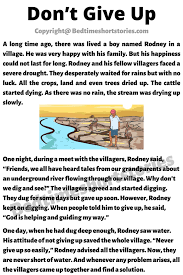The Power of Stories: Connecting, Inspiring, and Transforming Lives
Stories have been an integral part of human culture since the dawn of time. From ancient myths and legends to modern-day novels and films, storytelling has served as a powerful tool for communication, connection, and understanding.
One of the most remarkable aspects of stories is their ability to connect people from different backgrounds and experiences. Through shared narratives, individuals can find common ground, empathy, and a sense of belonging. Whether it’s a tale passed down through generations or a personal anecdote shared among friends, stories have the power to bridge divides and foster unity.
Beyond fostering connections, stories have the capacity to inspire and motivate. From tales of triumph over adversity to accounts of extraordinary courage and resilience, narratives have the ability to ignite passion, spark creativity, and drive positive change. By sharing our stories with others, we can uplift spirits, instil hope, and empower individuals to overcome challenges.
Moreover, stories have the potential to transform lives in profound ways. Through storytelling, we can explore new perspectives, challenge preconceptions, and expand our understanding of the world around us. By delving into the experiences of others through their narratives, we can cultivate empathy, compassion, and a deeper appreciation for diversity.
In essence, stories are more than just words on a page or images on a screen – they are vessels of emotion, wisdom, and humanity. They have the power to shape our beliefs, influence our actions, and leave a lasting impact on both individuals and societies as a whole.
So let us embrace the power of stories – let us listen with open hearts, share with generosity, and create narratives that inspire connection, spark change,and transform lives.
Five Essential Tips for Crafting Compelling Stories: From Character Creation to Suspenseful Storytelling
- Create engaging and relatable characters to draw readers in.
- Develop a well-structured plot with a clear beginning, middle, and end.
- Use descriptive language to paint vivid imagery and set the scene.
- Build tension and suspense to keep readers intrigued throughout the story.
- Show, don’t tell” – allow actions and dialogue to reveal character traits and emotions.
Create engaging and relatable characters to draw readers in.
Creating engaging and relatable characters is a fundamental tip in storytelling that can captivate readers and draw them into the narrative. By crafting characters with depth, complexity, and relatable qualities, writers can evoke empathy, connection, and emotional investment from their audience. When readers can see themselves reflected in the characters or empathize with their struggles and triumphs, they are more likely to become immersed in the story, making it a compelling and memorable experience for all.
Develop a well-structured plot with a clear beginning, middle, and end.
When crafting a compelling story, it is essential to develop a well-structured plot with a clear beginning, middle, and end. The beginning sets the stage by introducing characters, establishing the setting, and laying the groundwork for the narrative. The middle builds upon this foundation with rising action, conflict, and character development that keeps readers engaged. Finally, the end brings resolution to the story’s conflicts, ties up loose ends, and leaves a lasting impression on the audience. By adhering to this structure, storytellers can create a cohesive and engaging narrative that resonates with readers long after they have reached the final page.
Use descriptive language to paint vivid imagery and set the scene.
When crafting stories, employing descriptive language is key to immersing readers in the narrative world. By painting vivid imagery and setting the scene with rich detail, writers can evoke sensory experiences that transport readers to the heart of the story. From vibrant colours and textures to captivating sounds and scents, descriptive language adds depth and dimension to storytelling, allowing readers to see, hear, feel, and even smell the environments and characters within the narrative. This attention to detail not only enhances the reader’s engagement but also creates a more memorable and immersive reading experience overall.
Build tension and suspense to keep readers intrigued throughout the story.
In crafting a compelling narrative, it is essential to build tension and suspense to captivate readers and keep them engaged from start to finish. By carefully weaving moments of uncertainty, anticipation, and intrigue throughout the story, authors can create a sense of momentum that propels the reader forward, eager to uncover what lies ahead. This technique not only heightens the emotional impact of the narrative but also ensures that readers remain invested in the outcome, making for a truly immersive storytelling experience.
Show, don’t tell” – allow actions and dialogue to reveal character traits and emotions.
In the realm of storytelling, the age-old advice of “show, don’t tell” holds immense power. By allowing actions and dialogue to unveil character traits and emotions, a narrative gains depth and authenticity. Instead of explicitly stating a character’s qualities or feelings, letting their actions and words speak for them creates a more immersive experience for the audience. Through subtle nuances in behaviour and conversations, readers or viewers can form their own interpretations, forging a stronger connection with the characters and the story itself. This technique not only enhances the storytelling process but also invites audiences to engage actively in deciphering the complexities of each character’s inner world.

